History | The Madison Parks Foundation

The Madison Park and Pleasure Drive Association was organized in 1894 with a goal of developing and maintaining scenic drives and parks in and around Madison. Organizers wanted to ensure that people had the opportunity to enjoy greenspace and natural areas and were intent on creating luxuriant spaces for Sunday carriage rides. Support for the association was so strong that as much as 75% of the population contributed time, talents, and resources. Many of the largest contributors are familiar as surnames memorialized in Madison park, street, and building names: Tenney, Vilas, Brittingham, Farwell.
Edward Owen and John Olin founded the association, but Olin is regarded as “the father of Madison's Park System.” His foresight led to the development and preservation of 229 (269) acres of parks within the city limits by 1909. He helped raise nearly a quarter of a million dollars in private donations and influenced park development throughout the city. Olin advocated for parklands along the Yahara River, obtained the funding for what would become Wingra Park, and helped establish Brittingham Park. He also recruited landscape architect John Nolen as the city's first parks superintendent in 1908, and Nolen's plan for A Model City influenced many land-use decisions.
During the Association's 37 years of existence it acquired a remarkable 290 acres of parks and park lands for the public's use. The Madison Park and Pleasure Drive Association functioned as the city's unofficial parks department until 1931 when the association began to transfer responsibilities to the City of Madison. By 1938, the association had completed the transfer of its property and resources to the city.
The momentum of generosity never faltered. Indeed, the city continued to accept gifts of parkland and to build playgrounds, shelters, gardens, and other improvements upon those gifts. Warner Park, named for Madison Parks and Pleasure Drive Association leader Ernest Warner, was established in 1939, Marshall Park in 1956, Garner in 1965. Owen conservancy was dedicated in 1972. As the city grew outward, emerging neighborhoods deeded lands to Madison for park space, some of which awaits development. Neighborhood and civic groups, likewise, have remained active raising funds, maintaining gardens and helping to build much needed amenities. The Warner Park Community Recreation Center which opened in 1999 and the Goodman Community Pool which opened in 2005 are living examples of the spirit of the Park and Pleasure Drive’s private citizen activism.
Citizen support for Madison parks was again formalized in 2003 when the Madison Parks Foundation was incorporated. The Madison Parks Foundation began fundraising for the Goodman Pool in 2003 and became Madison Parks' fundraising partner for many of its important projects like the Brittingham Boat Renovation, the construction of Veterans Memorial Park, the Tenney Park Shelter Renovation, the addition of the Madison's first skatepark and assists many neighborhood friends groups with their fundraising efforts.
The foundation hired its first employee in 2013, and then successfully fundraised $300,000 for two additional splash parks. Over the next few years Madison Parks Foundation launched a Tributes & Memorials program, established an endowment, introduced historical signage in some of its most iconic parks, and became a fundraising partner for a new pickleball complex and for a national grant to connect children with nature. Other initiatives include renaming a park to honor East High School's beloved principal, Milton McPike, sponsoring the Learning Series that provides free programming in our parks for the community, fundraising for KNOW (Kids Need Opportunities at Warner) to provide much needed youth programming at Warner Park Community Recreation Center, and launching a capital campaign for additional accessible & inclusive parks and playgrounds throughout the city.
We encourage you to help support Madison parks for future generations.
Madison Parks Foundation Legacy Project
More Park History

Created and donated by P3Pro LLC



